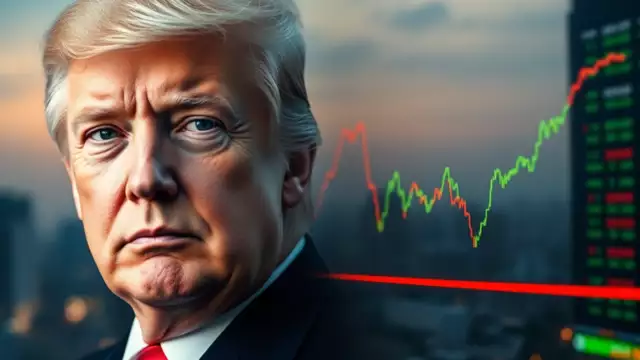European stocks are expected to open lower on Thursday, reversing the positive momentum seen earlier this week. This decline reflects a cautious sentiment among investors, driven by a mix of global and regional factors. Concerns over slowing economic growth in major economies, uncertainty around central bank policy decisions, and tepid earnings reports from key sectors are likely weighing on markets. Additionally, geopolitical tensions and inflationary pressures continue to create a fragile backdrop for risk assets.
This pullback follows a week of gains driven by optimism over the reopening of key global markets and speculation of easing monetary tightening. However, the absence of fresh catalysts to sustain the rally has left markets vulnerable to profit-taking and broader risk-off sentiment. Traders are also keeping an eye on upcoming U.S. economic data, which could influence global market direction.
Futures data indicate losses across the region’s major indices. The U.K.’s FTSE 100 is forecast to open 25 points lower at 8,516, with pressure likely stemming from energy and commodity sectors amid weaker global demand expectations. Germany’s DAX is set to fall 8 points to 21,251, as investors digest mixed data on industrial production and trade. In France, the CAC 40 is expected to decline by 8 points to 7,828, with luxury goods and automotive stocks potentially underperforming. Italy’s FTSE MIB is forecast to open 59 points lower at 35,973, reflecting concerns around the eurozone’s debt trajectory and inflation dynamics.
Drivers Behind the Market Move
Yesterday’s financial markets were significantly influenced by several key developments, particularly concerning the U.S. and European economies. François
Earnings
In the U.S., the stock market showed strong performance, with the S&P 500 reaching a new intraday high, driven by solid earnings from major tech companies such as Netflix, Oracle, and Microsoft. This rally was also fueled by President Trump’s “America First” economic policies and growing optimism around the new U.S. AI project. These factors helped push tech stocks higher, with Netflix and Oracle showing notable gains, reflecting investor confidence in the sector’s growth potential. This positive sentiment was further supported by market expectations that the U.S. economy would continue its upward trajectory under Trump’s leadership.
Tariffs
Meanwhile, in Europe, the ongoing tariff threats from the U.S. were a focal point for leaders like French President Emmanuel Macron and German Chancellor Olaf Scholz, who met to discuss how the region should respond to potential U.S. import tariffs. Despite the pressure, both leaders aimed to show unity, emphasizing the importance of a coordinated European response to these trade challenges. With the U.S. threatening tariffs, European leaders are keenly aware of the economic impact these policies could have on the region, and they are working together to address these risks while maintaining European cohesion.
Central Banks
Central bank policies are also a major point of focus. Investors are carefully examining economic data to predict the future path of interest rates. Data showing persistent inflationary pressures, such as rising energy costs or supply chain disruptions, has investors speculating that central banks, particularly the European Central Bank (ECB) and the Federal Reserve, may continue tightening monetary policy. Investors are becoming increasingly concerned that high interest rates may linger for longer, which would make borrowing more expensive and slow down both consumer and business spending. Mixed economic data creates additional uncertainty, raising questions over whether central banks have succeeded in taming inflation or if further rate hikes are needed.
Upcoming Economic Events
As we look ahead to key economic events that could shape market trends, investors will be closely watching several important data points this week: Unemployment Claims, President Trump’s speech, and Crude Oil Inventory. Each of these has the potential to move markets, either positively or negatively, depending on the outcome. In this analysis, we’ll explore how markets are likely to respond to these events, from the perspective of Naeem Aslam, CIO, who brings a seasoned analytical view to interpreting the data.
Unemployment Claims
Unemployment Claims data is a crucial indicator of labor market health, and this week’s release will be under intense scrutiny. If the unemployment claims number surpasses forecasts, it would likely signal a more robust labor market than expected. As we often highlights, a stronger labor market can be interpreted as a sign of economic resilience, which may lead to increased consumer spending and business investment. In this case, the market could respond positively, with investors viewing the data as a sign of a strong, sustainable recovery. This might fuel further risk-on sentiment, particularly in growth-sensitive sectors like technology and consumer discretionary.
However, if unemployment claims rise higher than expected, it could signal distress in the job market, suggesting that businesses are cutting back on hiring. This would likely weigh on investor sentiment, especially in the short term, as higher unemployment could fuel concerns about slowing economic growth. Markets could respond negatively, with equities facing downward pressure as risk appetite wanes. As Naeem Aslam often cautions, weaker employment data tends to stoke fears of a potential recession or stagflation, which could prompt a flight to safe-haven assets like gold or government bonds.
President Trump Speaks
The impact of President Trump’s speech will depend largely on the tone and content of his remarks. As Naeem Aslam would emphasize, political speeches by prominent figures can have a profound influence on market sentiment, particularly if they touch on issues such as economic policy, trade, or geopolitical tensions. If President Trump announces new economic initiatives, tax cuts, or moves to ease regulatory pressures, markets could see a boost, especially in sectors that stand to benefit from these measures, such as financials and infrastructure. A positive response from the President could increase investor confidence, pushing major indices higher in a risk-on rally.
Conversely, if the speech contains inflammatory rhetoric or uncertain policy directions, it could create volatility. Investors might fear that political instability or heightened trade tensions could disrupt global markets. As Naeem Aslam frequently notes, uncertainty surrounding political leadership often breeds market hesitation, and markets could face downside risk if the speech generates negative headlines. This could lead to choppy market conditions, with some investors shifting away from riskier assets and seeking refuge in defensive sectors or safe-haven currencies.
Bitcoin Prices
As of now, Bitcoin is trading at $102,378.
Bitcoin trading has become even more interesting as Trump has taken the White House and a new Presidential office is highly due in the coming hours. Bitcoin prices are affected by various factors, including economic policies and market sentiment. President Trump’s tariff strategies and their potential impact on the U.S. dollar could indirectly influence Bitcoin’s appeal as an alternative asset. Additionally, discussions around currency valuations, such as China’s response to U.S. trade policies, may affect investor behavior toward cryptocurrencies.








